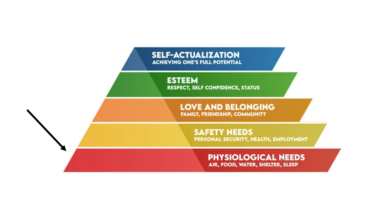Fending off Burnout for Fundraisers and Social Good Leaders

Nearly two years into the COVID-19 pandemic, many, if not all, of us are tiptoeing between burn out and combustion. I’ve worked from home for more than a decade, but my work and home life never entangled the way they do today. As a change-maker dedicated to the social good space, as an ambitious, career-driven woman, as a mom and a wife totally and completely devoted to the well-being of my family, as a human being deeply rooted in and committed to contributing to my community and humanity–I’m exhausted.
And I’m not alone. In a 2021 study from McKinsey & Co. and LeanIn.Org which polled more than 65,000 North American employees, 42% of women and 35% of men reported feeling burned out often or almost always in 2021, compared to 32% of women and 28% of men last year. I’d guess that the 2022 numbers will just continue to grow.
What’s more, according to the National Center for Health Statistics Household Pulse Survey nearly 30% of adults over the age of 18 (31.7% of females and 23.8% of males) are reporting symptoms of anxiety or depression compared to 8.1% in 2019.
We’ve all seen that women have felt the burdens of the pandemic disproportionally. Many of us have experienced it firsthand. I certainly have. The nonprofit sector is predominantly made up of women. In fact, some studies report that upwards of 77%-82% of employees in the sector are female. So I’d argue, our sector (including, but certainly not limited to the healthcare sector) is disproportionately impacted by burnout as well.
It feels like an 8th grade math problem. I know them well after a year and a half of homeschool. If 42% of women and 35% of men report being burned out often or almost always, and 30% of adults report symptoms of anxiety and depression with women skewing higher than men, and 82% of the nonprofit sector is made up of women, how many people reading this blog post are battling burnout right now? (Answer – a lot of you).
So what can we do about it? As fundraisers and leaders in the Social Good community, we cannot normalize the disillusionment caused by the circumstances of the past two years. We have a unique opportunity and a profound responsibility to ourselves, to each other, to those we serve, and to our communities at large to prioritize wellbeing. Let’s get back to the basics.
How to Fend Off Personal Burnout
Before you can even think about what your team, constituents (when applicable), volunteers, boards, fundraisers, or donors need (feel free to extend that audience to your children, partner, family, friends, neighbors, if it feels right), you absolutely must practice putting your own oxygen mask on first.
- Get back to basics. In case you forgot, according to Maslow’s hierarchy of needs, the basics are: air, food, water, food, shelter, sleep… no shame if you need a reminder! In my experience over the past 2 years, often times the sleep, followed by food and water, are the first to go when trying to fit more things than humanly possible into a single day. (A month ago, I literally stuck a post it on my wall that read: “Are you thirsty?” in an effort to remember to drink water.)

- Make time for movement and mindfulness. Exercise and meditation aremy game changers. These likely fall into the safety needs category of “health” in the second tier of Maslow’s hierarchy. The problem is, both seem counterintuitive. Who has the energy to exercise when feeling tired and worn down? Who has the time to sit in stillness and silence when their to-do list is off the page? Yet, both movement and mindfulness are two of the most important building blocks of a well-balanced mind and body.
- Time blocking, not just for work, but for basic needs and self-care is a practical tool I’ve adopted over the past 6 months to have a better chance at balancing the demands of an overscheduled, overwhelmed life.
Reduce Professional Burnout and Promote Wellbeing
The people that make up your team, volunteers, fundraisers, or donors could be suffering or recovering from burnout. The root and cause of the issue is complex, but there are a few simple things we can do in the workplace.
- Bring it up. Our work and personal lives are more intertwined than ever before. As a result, people want to be able, and should be encouraged, to show up as their whole selves. Set the tone by sharing your own experience and encourage your team and your supporters to share their challenges. Let them know you support them. Employee and supporter engagement is about relationship building. Allowing people to show up as their whole selves creates a bond of trust that says “I see you. I hear you. I support you.”
- Keep asking for contributions. As we think about how we can help others during this time, let’s remember that the act of giving can improve individual’s wellbeing. So giving your supporters the opportunity to give can be an offering of support in and of itself. According to the Cleveland Clinic – from volunteering to donating to committing to raise money for a cause – giving can biologically create “warm glow,” activating regions in the brain associated with pleasure, connection with other people and trust. As a result of giving, the human brain secretes “feel good” chemicals such as serotonin (a mood-mediating chemical), dopamine (a feel-good chemical) and oxytocin (a compassion and bonding chemical). Proven health benefits associated with giving can include:
- Lower blood pressure.
- Increased self-esteem.
- Less depression.
- Lower stress levels.
- Longer life.
- Greater happiness and satisfaction.
- Provide flexibility and connection backed by best-in-class technology. According to The Conversation, women show a greater preference for collective giving and other collaborative charitable efforts than men, and younger Americans were significantly more likely to participate in unconventional forms of giving. Creating an evergreen or DIY fundraising campaign that includes the option for individuals to fundraise takes only a few minutes on JustGiving. With even a single campaign that lives on throughout the year, you’ll give your supporters the technology they expect, the flexibility they need and the connection they crave. If you use JustGiving, you’ll get an additional boost to your supporter experience without having to lift a finger with a built in fundraiser email journey that coaches, celebrates and thanks fundraisers.
- Keep it simple. Many organizations turned to virtual events during the pandemic. But we also learned that in addition to the allow participants to fundraise and donate during the COVID-19 lockdowns, there were other benefits to hosting virtual events—cost savings, fewer logistics to manage, and less staff overhead to name a few. As we head into event season, consider keeping things simple by keeping your event virtual for one more season. View our Build a Better Virtual Event webinar for inspiration.
We are all in this together. Just in a very strange, isolated way. We will get through this. Keep your hands steady, your hearts full, your schedules time blocked and your fundraising campaigns always on. If no one’s told you today – you’re doing awesome!
